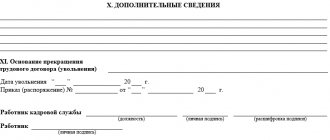On April 24, 2017, the Supreme Court of the Russian Federation considered the results of legal proceedings related to the imposition of an easement on land. His conclusions will be useful not only to courts when making decisions, but to citizens and organizations in cases where they are forced to give up their plots for limited use or, vice versa. Using examples, we will consider the terms of the easement, how the amount of payment for use is determined, is it possible to register an easement agreement not for the entire plot, but only for part of it, etc.
Let's imagine a situation: there are two owners of land plots, Ivanov and Petrov. Petrov has no way to get to his site except through the territory of his neighbor Ivanov.
In accordance with paragraph 1 of Art. 274 of the Civil Code of the Russian Federation, Petrov has the right to demand that Ivanov give him the opportunity to cross his site. This is a limited use right called an easement.
To do this, the parties agree with each other and draw up a written agreement. It is officially registered with Rosreestr. Such a right can be issued temporarily, for example, when Petrov needs to install electricity, but work also has to be carried out on Ivanov’s site.
Establishment of easement through court
If the neighbors cannot come to a consensus on how to get Petrova through Ivanov’s site, the dispute can be resolved through court. According to paragraph 3 of Art. 274 of the Civil Code, the parties can immediately appeal to the judicial authority. In this case, a measure in the form of an attempt to resolve the dispute pre-trial is not required, nor is the filing of a claim by one of the parties.
The applicant needs to decide which court he needs to go to. Arbitration courts hear disputes related to economic issues. If the company’s transport is forced to pass through someone else’s territory to deliver goods, then the issue of easement will be resolved in arbitration court. If a dispute arose between individuals, for example, owners of summer cottages, then it is subject to resolution in a court of general jurisdiction.
When the plaintiff claims to establish an easement for passage to an unauthorized building, the court will not rule in his favor, since an easement cannot be established for such objects.
Regulatory legal acts for land plots may also provide for a public easement. These are cases such as access to power lines, roads, gas pipelines, etc. for their repair or maintenance.
Grounds for termination of a public easement
As judicial practice shows, most often the basis for terminating a public easement is the expiration of the regulatory legal act by which the restrictive right was imposed, for example, upon completion of the relevant work. In this case, all work may be completed earlier than indicated in the act.
The owner of a land plot has the right to contact the local administration, representatives of local authorities, in order to terminate the public easement. No one can deny him this.
If, during the validity of the public easement act, the owner’s land plot was subject to cardinal changes of a negative nature (damaged or rendered unsuitable for further use), then the owner has the right to go to court to obtain material compensation or sell this plot in favor of the municipality according to its cadastral value. An independent assessment of the damage by an expert will come in handy here.
Can the owner of the site on which the power line support is installed establish an easement?
Mr. Sidorov went to court because a power line support was installed on his property. The facts of the case are as follows:
- The power line pole belongs to the organization;
- The owner of the support has refused the easement agreement and is actually using someone else’s land, evading payment of payment and the procedure for using the land (time, frequency of maintenance of the support);
- The installation of the support was carried out after Sidorov registered ownership of the land.
The court of first and appellate instances rejected the applicant, because The judges considered that the plaintiff could be the one in whose interests the easement was established, i.e. prop owner. However, the cassation court overturned the decisions, pointing to the provisions of Art. 274 Civil Code. According to them, the owner of the plot is not deprived of the right to demand the establishment of an easement, because It is his rights that are violated.
Don't pass by
In past times, when there were not so many garden plots, all dachas were built taking into account the fact that the owner could easily enter or drive into his plot. And the easement was something exotic, only a narrow circle of lawyers knew about it.
But over time, land plots owned by citizens and all kinds of legal entities became many times larger, and existing plots began to be divided or merged at incredible speed.
The heirs could split one plot into several and sell it.
Buyers could demolish an old house on their acres and build a new one in another place, so much so that it became a problem to get to it. Plus, in some regions, local authorities could sell the former field for a certain facility in front of the old dacha plots. The result is that the previous entrances to the sites disappeared under the excavator bucket. In general, there are so many options for establishing an easement that it is very difficult to list everything. As a result, in our courts, claims for the establishment of easements began to appear almost everywhere and in considerable numbers.
The easement is mentioned in the Civil and Land Codes. Thus, Article 274 of the Civil Code states that the owner of real estate has the right to demand from the owner of neighboring land, and sometimes from several owners of plots, to grant him the right of “limited use” of their plots. An easement is established in several cases: for passage or passage through a neighboring plot, for the construction or operation of linear facilities (gas, water, electricity, etc.) and for “other needs” of the property owner, who cannot do anything without an easement.
For more information on how to gain access to your plot through a neighbor’s, read the “Legal Consultation” on the RG website
Is an easement required? No. Neighbors can come to an agreement. But if it doesn’t work out, then the problem will be solved by the court, which will establish an easement. You need to know that an easement is subject to registration, just as property rights are registered. But an easement is not necessarily a burden for the rest of your life. If the grounds on which it was established disappear, then the easement may be terminated (Article 276 of the Civil Code).
The Supreme Court of the Russian Federation, in its review, emphasized several main provisions that courts must take into account and implement, and citizens should know them.
Thus, it is not necessary to establish an easement if passage or passage to an unauthorized building is required. As an example, the Supreme Court cited the decision of its colleagues in a similar dispute. A certain company demanded a lifetime easement through a summer resident’s plot for access to its newly constructed building, as stated in the lawsuit: “for the purpose of maintaining this building.” The court rejected the businessmen's decision, as it turned out that they had erected a huge capital facility on the site of an old warehouse without permission. But since they built the building without documents, they have no ownership rights to it. This means that there can be no question of any easement.
Another important provision that the Supreme Court drew attention to. An easement can be established only if the owner of the plot has no other way to get to his place other than through his neighbor’s plot. As an example, a dispute between two neighbors is given. One of them asked the court to establish an easement, since the road to his house goes through a neighboring plot. But the court found that the plaintiff’s house can be reached not necessarily through someone else’s land. There is another way. Yes, it is in poor condition, and it takes longer to travel along it, but since there is another way, then there is no need to cause any inconvenience to your neighbor.
Neighbors can come to an agreement. But if it doesn’t work out, then the problem will be solved by the court, which will establish an easement
There is another aspect that needs to be taken into account. If, after establishing an easement, the owner of the site through which the passage will be unable to use his land, the easement cannot be permitted. This situation arose in a dispute between a certain company and a citizen, on whose site there were utility networks, sewer pipes and a pumping station. All this farm was used by the company to service its facilities, so it asked for an indefinite easement of the neighboring plot. The consideration of the dispute in court showed that it was once one plot, which was divided and part was sold to the company. The owner of the second part has repeatedly asked businessmen to remove utility networks from his land.
The court found that this could have been done, but the company was stubborn. Now, the court decided, if the company is allowed an easement, then the owner of the land will actually not be able to use it and rejected the claim.
An easement is a paid pleasure for those who ask for it. The Supreme Court emphasized that the fee for the easement is established by the court based on “the principles of reasonableness and proportionality, the area and the period for establishing the easement.” This may be a one-time payment, or perhaps periodic payments. The Supreme Court also reminded that the fee for the use of an easement can be changed - increased or decreased. But this can only be done if the owner of the plot encumbered by the easement changes the scope of restrictions on his rights.
And the last point that the Supreme Court drew attention to in its review is that if the state real estate cadastre does not contain information about a plot encumbered by an easement, this does not prevent the registration of the easement itself.
The procedure for accepting an easement
An easement is established exclusively in a situation where the owner of the plot has no other opportunity to use his own land. For example, Ivanov went to court with a demand to establish an easement in relation to a neighboring plot, because he did not want to get to his own bypass: along a path that was longer and more inconvenient. In this case, the plaintiff has the opportunity to enter his own plot without burdening the neighboring one with an easement. Such an application must be rejected.
Also, an easement cannot be established on a plot if because of it the owner cannot use it for its intended purpose. For example, a society filed a claim against an individual entrepreneur with a demand to establish an easement for the use of the sewer network on its territory. The applicant’s and the individual entrepreneur’s plots are adjacent and were formed by dividing one plot. There was part of the sewerage network on the entrepreneur's property. The individual entrepreneur previously conducted an examination of the possibility of moving it to the defendant’s territory and approached the company with such a proposal, because the object prevents the entrepreneur from fully using the site. However, the applicant did not take the proposed measures. The court rejected the claimant because utility networks restrict the use of the site, and an easement will make it impossible to use the site for its intended purpose.
When considering claims, the court takes into account all the circumstances that make it possible to establish an easement or refuse to satisfy: information about the site, the terms of the agreement, the purpose of the land, the duration of the agreement, the procedure for determining the amount of payment, types of work in cases where the easement is accepted for the duration of servicing the objects, their repair, etc.
The plaintiffs and owners of land plots through which the road to residential buildings passes, after refusing to satisfy the demands of the Federal Property Management Agency in the district and regional courts, were able to obtain a review of the case through the Supreme Court of the Russian Federation.
The court of first instance should have examined all the conditions of the easement, for example, the nuances of vehicle passage, which would not contradict the rights of the plaintiffs and would be less burdensome for the owners of the land plots through which the road passes. In such cases, when special knowledge is required, for example, when organizing traffic or conducting performance assessments, the court may turn to experts.
An easement established by a court is subject to registration, therefore the court act clearly states the conditions for limited use of the site. These conditions were not met by the trial courts. It is not clear from the court decisions whether the disputed plots are the only way to get to the houses, what alternative options are available so as not to encumber the plots with an easement, and whether the acceptance of its terms does not limit the access of owners to their plots.
When considering this case, the courts of the two first instances indicated that the use of buildings and public places is possible only through the plaintiffs' plots, and the expert opinion was not taken into account. It indicated the possibility of laying a new road to buildings and public places. The judicial acts also did not contain the validity period of the easement or the amount of payment for the use of the areas through which the road passes.
It turns out that the courts did not fulfill the conditions imposed when considering cases of this category, and the dispute that arose was not considered on its merits.
Execution of termination of an easement, methods of its termination
Since land relations are regulated not only by the Land Code of the Russian Federation, but also by the Civil Code, the latter quite clearly states how exactly the termination of an easement occurs. Thus, Article 276 of the current Civil Code of the Russian Federation states that the termination of the right to limited use of land occurs after the termination of the grounds for this right.
To obtain the appropriate act, you must apply to the court with a corresponding application or contact the local administration (department of land and property relations).
In cases where representatives of local authorities did not take any action to terminate the easement and did not issue the corresponding act, then an appeal to the judicial authorities cannot be avoided.
What to do if there is no information on part of the plot in the Unified State Register?
Despite the absence of data on part of the site in the Unified State Register of Real Estate, the easement is subject to registration. For example, an NPO and an enterprise entered into an easement agreement. According to its terms, the NPO had the right to move through the site of the enterprise. The agreement also stipulated the temporal and spatial conditions of use.
The NPO applied for registration of the easement. But, since there was no information in the cadastre about the part of the plot encumbered by the easement, the registration authority did not accept the application, recommending that cadastral work be carried out. To do this, according to the registration authority, the applicant had to determine the boundaries of the site for which limited use was given and register it with the cadastral chamber. However, the NPO challenged this decision in the arbitration court. According to the Law on Registration of Rights, there is no mandatory condition for the cadastral registration of part of the plot when it comes to an easement. Such an obligation arises for state or municipal plots if the agreement is concluded for a period of more than three years.
In other cases, to register an easement, it is sufficient to have information defining its conditions. They must be reflected in the register. It must be remembered that an easement established on part of a plot is registered for the entire plot, data about which is present in the real estate cadastre and the Unified State Register of Real Estate. In this case, the citizen or organization in whose favor the easement has been accepted uses someone else’s property on the terms accepted in the agreement.
Customer Reviews
Gratitude from Potapova T.I. I express my gratitude to Denis Yuryevich Stepanov for the work done, high qualifications, as well as for very clear, accessible help in solving my problem (protection of consumer rights). Excellent, very competent lawyer. Thank you very much!
Sincerely, Potapova Tamara Ivanovna, 07/09/2019
Thanks from Radhuan M.R. Dear Kavaliauskas Vasily Anatolievich. Let me express my sincere gratitude for the qualified legal assistance provided. Thanks to your professionalism, I was able to achieve a decision in my favor. I wish you further prosperity and professionalism.
Radhuan M.R. 06/08/2018
Customer Feedback We thank the employees of Legal Agency of St. Petersburg LLC and, first of all, Yana Maksimovna Matveeva and Andrey Valerievich Ermakov for their highly qualified and thorough consideration of our issue and the prompt solution to our housing problem.
Also to Daria Valentivna Kutuzov for her attentive and friendly attitude towards visitors.
Review by Irina D. I thank the Legal Agency of St. Petersburg for the warm, sincere welcome and the detailed, competent, thorough, conscientious legal position of lawyer Andrei Valerievich.
Feedback from Goncharova I, Venera Konstantinovna Goncharova, express my gratitude to Andrey Valerievich Ermakov, Yana Maksimovna Matveeva, Daria Vasilievna Kutuzova and the entire team. I would like to note that the work was completed within the agreed time frame and with good quality. They showed a professional approach and excellent organization of work. I would like to express my gratitude to the entire team for their high-quality work and wish you further development of your company.
Sincerely, Goncharova Venera Konstantinovna.
Gratitude from Tunnova L. Sergey Vyacheslavovich! Thank you for the qualified advice you provided regarding my question in the field of consumer protection (dispute with TC OPT, the kitchen was not delivered)
Lyubov Tunnova December 12, 2018
Gratitude from Ustinova T.M. I would like to express my deep gratitude to Sergei Vyacheslavovich for the legal services provided when I had a difficult relationship with Beauty Salon LLC and Alfa-Bank.
Ustinova T.M. November 10, 2018
Gratitude from Vraveevsky S.A. Sergey Vyacheslavovich! Thank you very much for the consultation! All the details were disclosed to me in detail, all questions were answered comprehensively. I am very glad to receive help from a qualified specialist!
Vraveevsky S.A. 12/18/2018
Gratitude from Gordeeva E.S. I express my special gratitude to Sergei Vyacheslavovich for his highly competent and detailed consultation on the issue of the employment contract.
Doctor of Philological Sciences, Gordeeva E.S. 12/01/2018
Review by Sokolov M.Yu. I express my gratitude to your company, as well as Denis Yurievich Stepanov and Daria Valentinovna Kutuzova for their conscientious attitude to their duties.
With sincere respect, Sokolov M.Yu.
Amounts of payments for easement
The court determines the fee for the easement based on the following circumstances:
- land area,
- its purpose,
- term of the agreement,
- the nature of the inconvenience caused,
- probable damage, etc.
Payment can be made one-time or regularly. The court may order an examination to determine the cost of use.
If the established fee does not suit the owner of the site, he must provide objective evidence to support the objections.
The terms of the easement may provide for changes in the amount of payment based on the level of inflation, and if the conditions for limiting the rights of the owner of the site change. For example, an individual entrepreneur filed a lawsuit against the company to change the amount of payment for the limited use of his site. The basis for the appeal was a change in the nature of use: the intensity of traffic through the site has increased. The defendant, as part of a pre-trial settlement, refused to pay more. The court, having studied the evidence: expert opinions, sided with the plaintiff and doubled the amount of the fee.
When considering cases concerning the determination of the amount of payment for the use of part of the site for access or carrying out installation, repair work, as well as changes in such payment, it is important for the plaintiff to prove the terms of the easement and their changes, so that the court obliges the defendant to pay the amount determined by the applicant.
Adoption of an act on the abolition of a public easement
In order to receive an act indicating that the right to limited use of land has been terminated, it is necessary to submit an application and documents to the department of land and property relations of local government representatives. You must have with you:
- act establishing an easement;
- certificate of ownership of the land plot;
- identification document.
If the public easement was temporary in nature with a specified, precisely prescribed period, then the basis for issuing an act of termination is sufficient only that the documents establishing the onerous right indicate the expiration date. In this case, the cancellation certificate is issued no later than 10 working days. It must indicate the grounds on which the right was established, as well as the validity period. Additionally, it may be indicated whether the easement was paid or whether the municipality used the land free of charge.
If a public easement was established with an unlimited period of validity, then as a basis for its termination, additional documents will be required confirming that the need to use the land of a particular owner has ceased. For example, you can request a certificate of completion of road repair work or the laying of communication networks.
Grounds for refusal of easement
APPELLATION
March 20, 2012 Maykop
Judicial Collegium for Civil Cases of the Supreme Court of the Republic of Adygea, consisting of:
presiding Meister V.M.
judges: Thagapsova E.A. and Shisheva B.A.
under secretary Khamirzova A.A.
considered in court a civil case on the appeal of Sayfutdinov F.V. – representative of the plaintiffs Kolobova L.Yu. and Chelokidi E.V. on the decision of the Maikop City Court of the Republic of Adygea dated January 27, 2012, which decided:
To satisfy the claims of Kolobova and Chelokidi against Volkova, Vatutina and the Administration of the municipal formation "City of Maykop" for the imposition of an easement on a land plot located at the address: - refuse.
Having heard the report of Judge B.A. Shishev, the explanations of F.V. Sayfutdinov. – representative of the plaintiffs Kolobova L.Yu. and Chelokidi E.V. (by proxy), who supported the arguments of the appeal, the opinion of the defendants Volkova V.P., Vatutina A.F., who considered the court decision legal and justified, the position of the representative of the administration of the municipal formation "City of Maykop" Bobina L.D., judicial panel
U S T A N O V I L A:
Kolobova L.Yu. and Chelokidi E.V. filed a claim against Volkova V.P., Vatutina A.F. and the administration of the municipal formation "City of Maykop" on the imposition of an easement. In support they indicated that they are the owners of a residential building located at the address: . The size of the land plot along the facade is 8.84 m, most of which is occupied by the house. The defendants own a house in , and the land plot is owned by the municipality "City of Maykop". The distance from the wall of the plaintiffs’ house to the border of the defendants’ land plot is about 2 m. This (undeveloped) width of the plot does not allow the plaintiffs to fully exercise the powers of the owner of a residential building and land plot, in particular, it becomes impossible for the entry and passage of vehicles for business purposes, as well as for car storage purposes. In response to a request for limited use of a part of a plot about 40 cm wide, Volkova V.P. and Vatutina A.F. They refused. They believe that they have the right to encumber the defendants' land plot with an easement for the entry of vehicles. They asked the court to impose an easement on the land plot at the address: from the border of the land plot to the wall of the house to the depth of the entire building.
At the court hearing, the plaintiffs' representative supported the stated demands and asked to encumber the adjacent land plot with an easement.
The defendants' representative did not agree with the claims and asked that they be denied. He explained that Kolobova L.Yu. had obstacles in the use of real estate. and Chelokidi E.V. No.
The representative of the FBU "Land Cadastral Chamber", duly notified of the time and place of the trial, did not appear at the court hearing, did not notify the court of the reasons for his failure to appear, and therefore the court, guided by Article 167 of the Civil Procedure Code of the Russian Federation, considered this case in his absence .
The court made the above decision.
In the appeal, the representative of the plaintiffs Kolobova L.Yu. and Chelokidi E.V. asks the court's decision to be quashed and a new decision is made to satisfy the claim. He believes that the court unreasonably refused to order an examination in the case and asks to appoint a forensic construction examination in the case to obtain new evidence. Draws attention to the inability to use the property belonging to the plaintiffs without imposing an easement.
Having checked the case materials and discussed the arguments of the appeal, the judicial panel believes that the court decision should be left unchanged for the following reasons.
In accordance with the provisions of Articles 274 and 277 of the Civil Code of the Russian Federation, a necessary condition for establishing an easement is the inability to meet the needs of interested parties to enter their land plot in any other way. In addition, the implementation of an easement, even when it is established, should be the least burdensome for the land plot in respect of which it is established.
When filing a claim, the person demanding the establishment of an easement must confirm the need to grant him the right to limited use of someone else’s property to meet his needs.
The court of first instance, refusing to satisfy the stated claims, reasonably proceeded from the totality of established and properly assessed evidence presented by the parties.
In particular, the court of first instance established that the plaintiffs are the owners of the homeownership located at the address: (each with a share). The owners of the property located at the address: , are the defendants: Volkova V.P. belongs to the share, and Vatutina A.F. share. From the case materials, it appears that the length of the plaintiffs’ land plot along the facade is 8.84 m, of which 6.84 m is occupied by a residential building, the undeveloped part of the land plot along the facade is about 2 m.
Applying to the court with a claim, Kolobova L.Yu. and Chelokidi E.V. indicated that the existing undeveloped part of the site - the width of the yard, does not allow full use of the residential building and land plot, since it prevents the entry and passage of vehicles for business purposes, as well as for car storage purposes.
Meanwhile, from the public lands there is a free entrance and approach to real estate objects - a residential building and a land plot. These facts are not disputed by the parties.
Under such circumstances, the court’s conclusion that the lack of free entry of a car into the yard is not an obstacle for the plaintiffs in using the real estate they own in full for its intended purpose, without any restrictions, should be considered justified. In addition, as the court of first instance correctly noted, this circumstance also does not prevent the plaintiffs from using a passenger car.
The argument of the appeal that the plaintiffs do not have the opportunity to use the property they own without the imposition of an easement is subject to rejection for the reasons stated above.
This is interesting: Planning organization of a land plot
The argument of the complaint that the court of first instance did not order an examination is also untenable, since during the consideration of the case, issues requiring special knowledge and the need to appoint an examination in accordance with the provisions of Article 79 of the Civil Procedure Code of the Russian Federation did not arise.
The panel of judges believes that the court's decision is legal and justified, made with the correct application of the rules of substantive law and procedural law, and there are no grounds for its cancellation. The arguments of the appeal as unfounded are subject to rejection.
Guided by articles 328, 329, 330 of the Civil Procedure Code of the Russian Federation, the judicial panel
O P R E D E L I L A:
the decision of the Maikop City Court of the Republic of Adygea dated January 27, 2012 was left unchanged, and the appeal was not satisfied.
Prohibitions on public easements
The main cases of using a public easement are listed in the law (Article 23 of the Land Code). Based on this list, the relevant authorities refer to this law in their documents.
For example, the Resolution “On Public Hearings” of the Samara city administration lists cases of refusal to establish a public easement:
- If the establishment of a substation will lead to the impossibility of using the site for its intended purpose.
- The goal for which the PS is established can be achieved in another way.
- The purpose of establishing a PS does not correspond to the cases outlined in Article 23 of the Land Code.
Options are also possible when the documents include expanded reasons for refusing a public easement. For example, in Art. 7 of the Law of the Republic of Crimea “On the placement of engineering structures” lists cases of refusal:
- Activities carried out on a site under a public easement are prohibited for this site.
- The purposes of establishing a public easement on a piece of land do not coincide with the purposes of this law.
- Actions carried out under a public easement will make it impossible to use the entire land plot (3 months for plots intended for individual housing construction, private plots, gardening, 1 year for other plots).
- Activities carried out under a public easement will make it impossible for other holders of this easement to use the site.
- The location of the structure being built under a public easement does not correspond to the documentation.
Litigation regarding termination of easement
Often citizens have to prove their rights to full use of a land plot without restrictions by appealing to the judicial authorities. To do this, you must have with you exactly the same list of documents as when contacting local government representatives.
This is interesting: Public land between neighbors
At the same time, the application states on what basis the competent and responsible authorities did not issue the corresponding act, that is, in addition to the documents, a corresponding refusal must be attached.
The validity of the refusal to terminate the easement is considered by the magistrates' courts, and in cases where one of the parties does not agree with the decision made, then by the higher courts. As a rule, if there are no grounds for continuing to use someone else’s land, then the municipality does not insist on such a right.
A citizen whose property has been damaged may file a lawsuit against local authorities for compensation for material and moral damage. The court, having assessed the damage caused, has the right to satisfy the claim in whole or in part.
Moreover, the court may offer the parties a solution in the form of purchase and sale of the owner’s land by the municipality. In this case, the final decision will remain with the owner, who has the right to accept such conditions or to continue to insist on compensation for damage in monetary terms while preserving the property.









